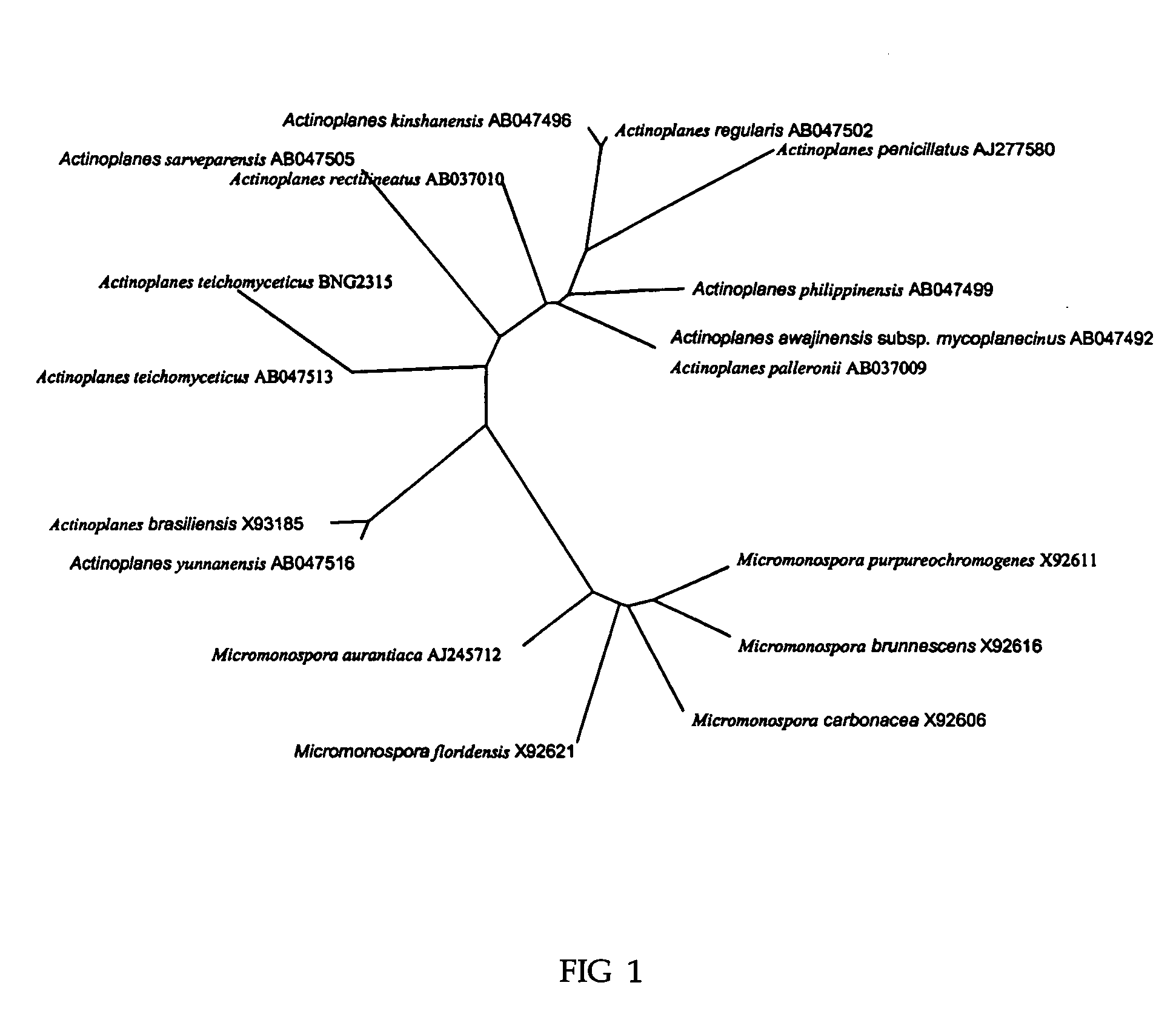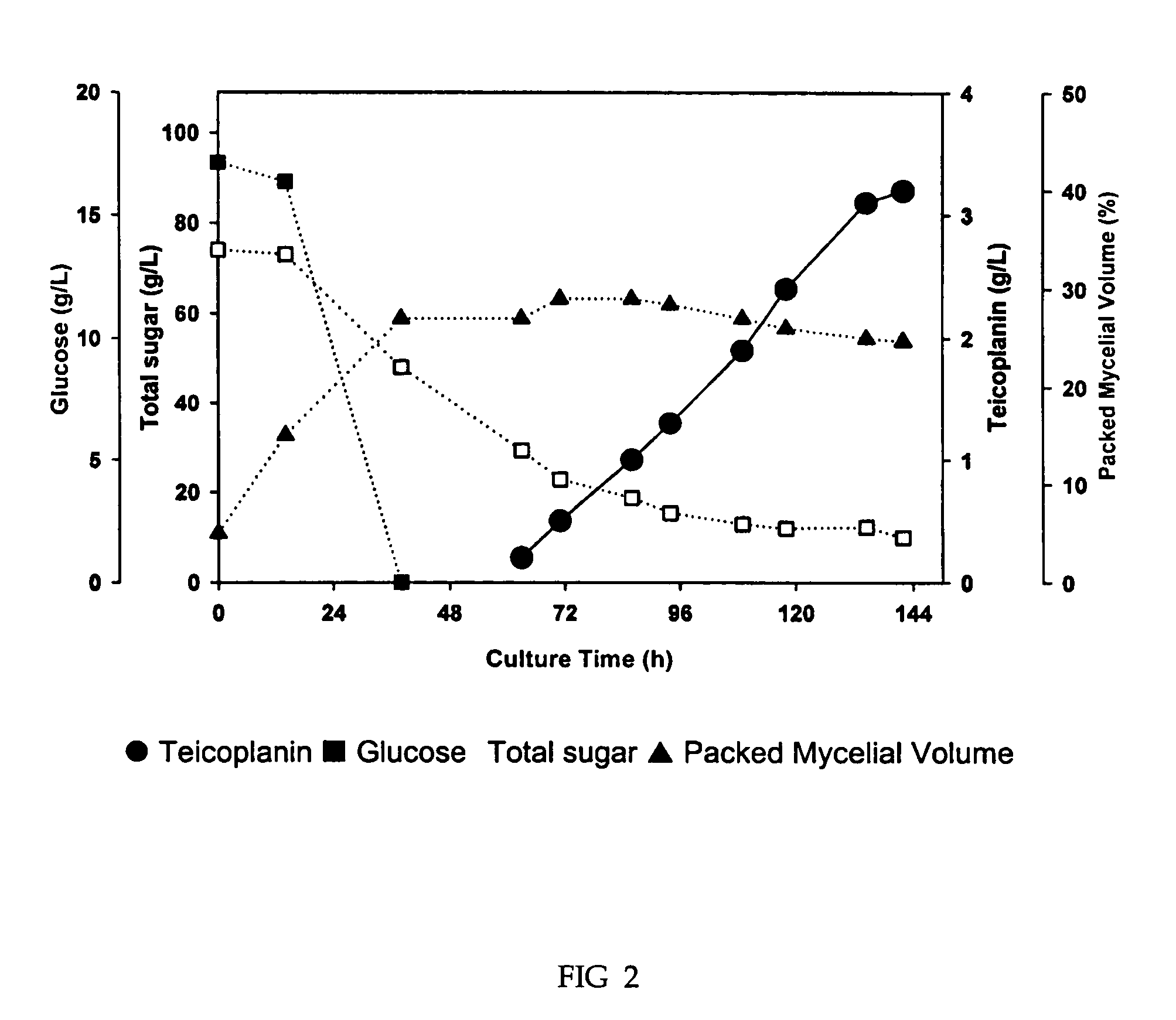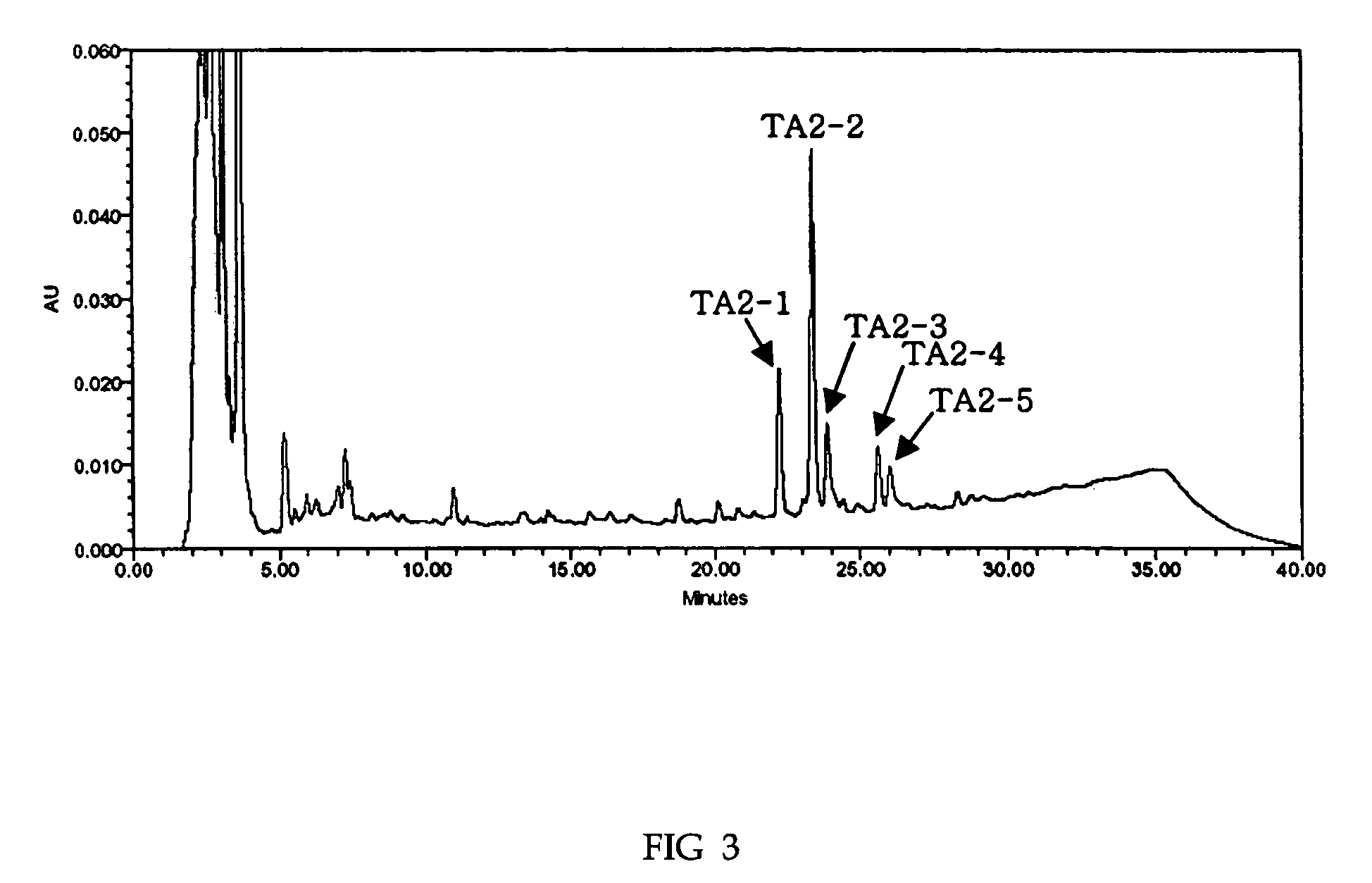Process for the production of teicoplanin
a technology of teicoplanin and process, which is applied in the field of microorganisms producing teicoplanin, can solve the problems of high cost and severe health problems, and achieve the effect of producing teicoplanin less than 50 mg/l productivity
- Summary
- Abstract
- Description
- Claims
- Application Information
AI Technical Summary
Benefits of technology
Problems solved by technology
Method used
Image
Examples
example i
Isolation of Microorganism Producing Teicoplanin
[0019]The mutant strain Actinoplanes teichomyceticus BNG 23 was isolated from a soil sample collected at Sorak Mountain, Korea by the capillary tube method. Microorganisms from a soil sample described above were inoculated on selection medium for identification of members of Actinomycetales. Candidated cultures selected as members of the Actinomycetales by the taxonomical properties were then planted in aqueous nutrient medium containing glucose, dextrin, soybean flour, potato protein, and mineral salts. The culture broths were filtered and analyzed by High Performance Liquid Chromatography (HPLC) using standard protocol for the assay of teicoplanin. The candidated cultures selected as teicoplanin producer were subjected to the microbial assay performed on Difco Nobel agar medium inoculated with 0.3% (v / v) of an aqueous suspension of S. aureus which contained 106 cells per 1 ml. Finally, candidated cultures selected as teicoplanin prod...
example ii
Isolation of Hyper-Producing Mutant for Teicoplanin
[0021]In order to isolate mutant strains producing teicoplanin more efficiently than mother strain described above, treatment for mutagenesis was performed by UV radiation. Mother strain was cultivated on oatmeal agar slant at 32° C. for 12 days. Normal saline buffer was added into the slant and mixed them vigorously, and then the suspension was filtered with No. 2 Wattman Paper. The spore suspension was subjected to UV radiation by 30 W UV lamp and stood still at 4° C. for 2 hours in the dark. The spore suspension was transferred on soytone agar medium containing 100 mg / L teicoplanin and incubated at 32° C. for 7 days.
[0022]The culture of pathogenic microorganism of Bacillus subtilis was inoculated on the colonies grown on the plate and it was incubated at 32° C. for 18 hours. Colonies that make larger inhibition zone around themselves than that formed around the mother strain were selected as candidated mutants and they were named...
example iii
Taxonomical Identification of the Mutant Strain Actinoplanes teichomyceticus BNG 2315
[0025]The newly isolated strain producing teicoplanin was taxonomically identified by the analysis of cellular fatty acid, cell wall composition, and 16s rDNA sequence. The analysis of cellular fatty acid shows 98% of similarity with Actinoplanes teichomyceticus and the diaminopimeric acid of the strain is meso-form like that of Actinoplanes teichomyceticus. In particular, the sequence of 16s rDNA of the newly isolated strain producing teicoplanin shows 99% homology with that of Actinoplanes teichomyceticus. As a result, this newly isolated strain producing teicoplanin was determined as belonged to Actinoplanes teichomyceticus. However, this strain is clearly distinguished from the strain Actinoplanes teichomyceticus described in U.S. Pat. No. 4,239,751 by several cultural and physiological characteristics described below. Thus, the mutant strain has been assigned as Actinoplanes teichomyceticus BNG...
PUM
| Property | Measurement | Unit |
|---|---|---|
| diameter | aaaaa | aaaaa |
| diameters | aaaaa | aaaaa |
| diameter | aaaaa | aaaaa |
Abstract
Description
Claims
Application Information
 Login to View More
Login to View More - R&D
- Intellectual Property
- Life Sciences
- Materials
- Tech Scout
- Unparalleled Data Quality
- Higher Quality Content
- 60% Fewer Hallucinations
Browse by: Latest US Patents, China's latest patents, Technical Efficacy Thesaurus, Application Domain, Technology Topic, Popular Technical Reports.
© 2025 PatSnap. All rights reserved.Legal|Privacy policy|Modern Slavery Act Transparency Statement|Sitemap|About US| Contact US: help@patsnap.com



